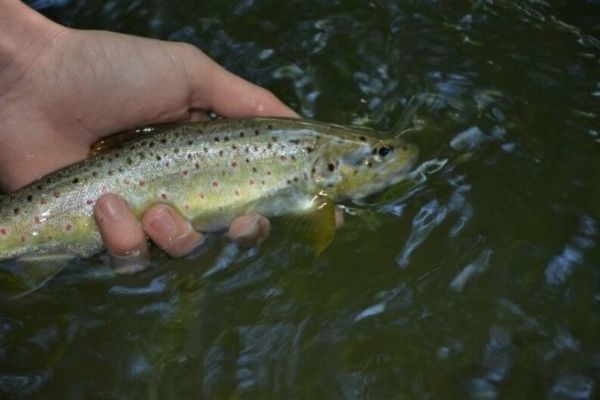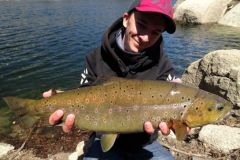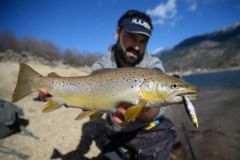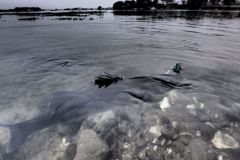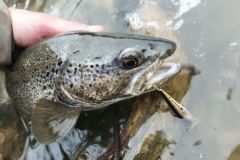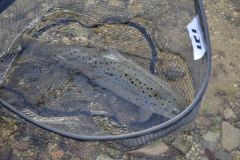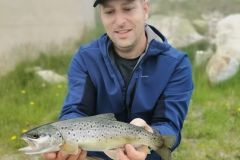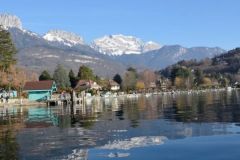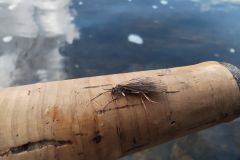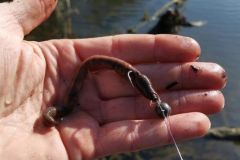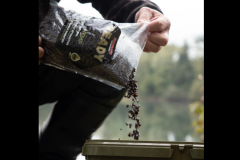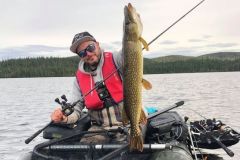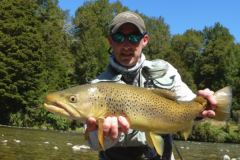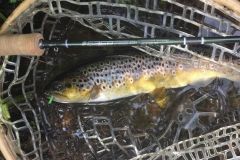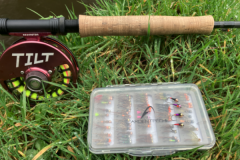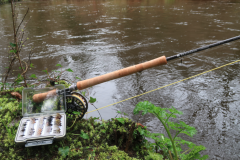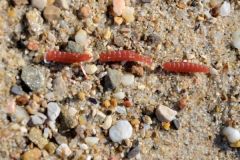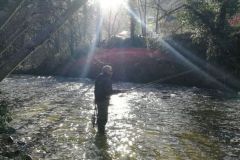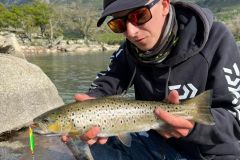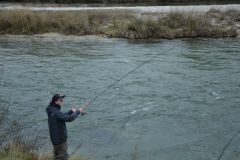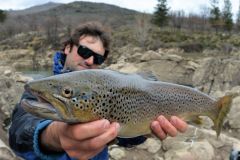Presentation
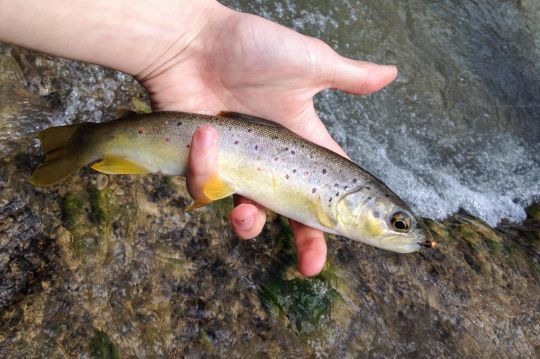
The fario trout or common trout, of the salmonid family, is a species present on the whole European continent. Its body is fusiform, its head is rather broad and its dress can be of various colors. Black, brown or yellowish, the coat of the fario trout is most often strewn with black and red spots more or less marked.
Salmo trutta fario appreciates clear and rather cold waters. It needs water with a high oxygen content to live and reproduce. The fario trout does not appreciate stagnant water, it prefers fast water which can be found in streams and rivers classified as 1st category. It can also be found in some mountain lakes. The average size of a fario trout varies between 20 and 30 cm. The largest specimens can exceed 70 cm and reach a weight of 6 kg.
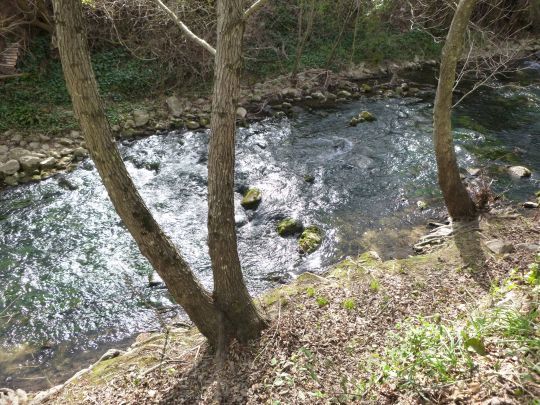
An opportunistic carnivore
The brown trout feeds as well on small fish (minnow, sculpin or loche) as on various invertebrates. Insects, larvae, mollusks, amphibians or crustaceans are part of its diet. Opportunistic, it does not hesitate to seize terrestrial preys which can be presented to it, earthworms, grasshoppers or other insects.
Reproduction
The reproduction of the fario trout takes place between October and February depending on the region and the biotope. The trout lays its eggs in a hole and covers them with sand or sediment. The hatching takes place between 40 and 60 days after the spawning depending on the water temperature. A brown trout becomes sexually mature at about 3 years old. Brown trout can be cannibalistic and feed on juvenile fish of their own species.
Fishing for brown trout
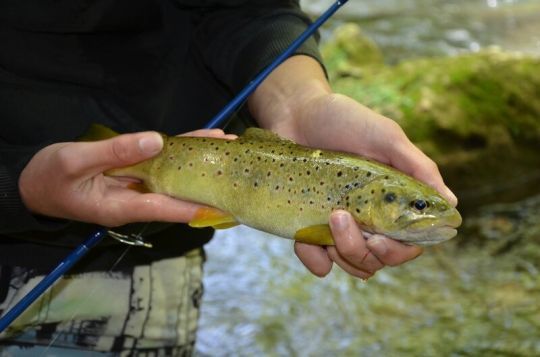
Many fishing techniques can be used to catch wild trout. Whether it is with a lure, a fly, a bait or a strike, the search for this fish is a real passion for many fishermen. It is a wary fish and not so simple to lure especially if you aim at big subjects. Discretion, in the assemblies and during your movements at the edge of the rivers, is essential to succeed in your sessions.
Regulation
The fishing of the fario trout is subject to specific regulations. Opening period, legal size of capture, no-kill courses, quotasâeuros¦ It is necessary to inform you with your departmental fishing federation or your Aappma to be informed of the legislation in force.
